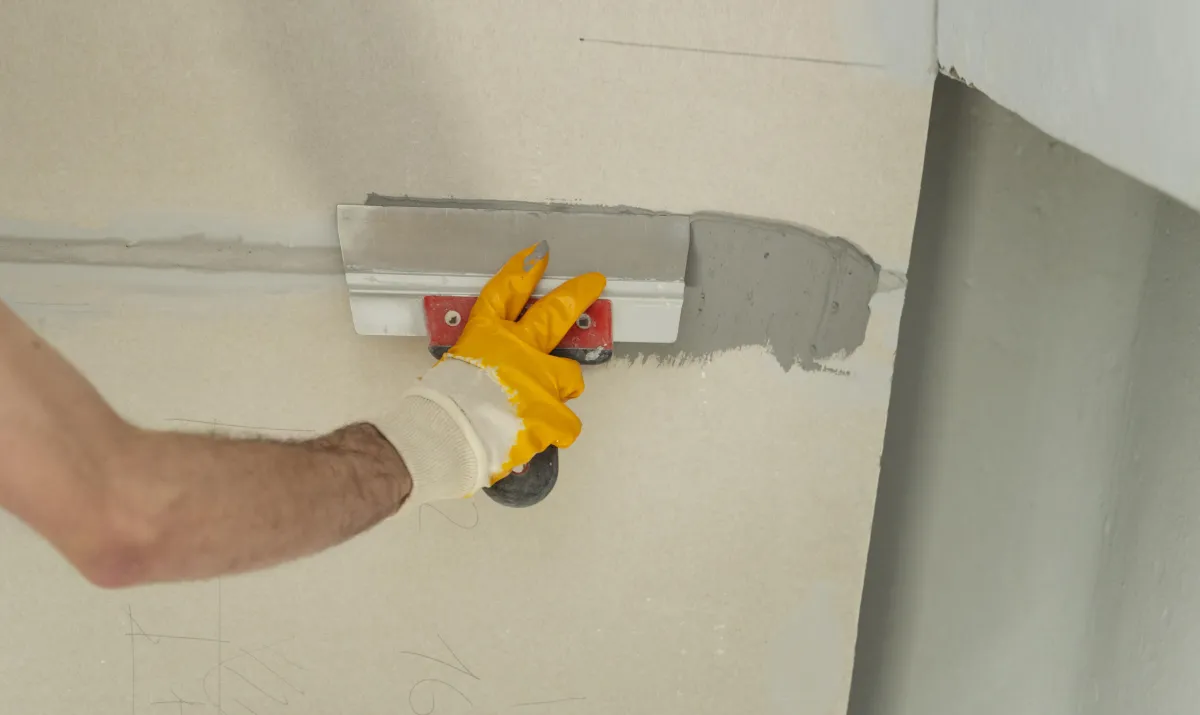
DIY: How to Repair Drywall
It doesn’t matter how the damage got there, the fact is that it’s there, and now we need to repair it. Before you paint, you’ll need to fix any drywall damage, pings, scrapes or holes. There’s a few methods, so let’s hop right in.
Repair Dents, Scrapes, or Tiny Holes
The easiest types of drywall damage to repair are the small scrapes or dents that can naturally occur in your walls. Your local hardware store has small dent repair kits for drywall that will allow you to put a little bit of putty and dab it on the damage. You’ll almost always need to sand it down before you begin painting it. For small holes, touch up paint should do the job.
Nail Heads
If you’ve put a nail into your drywall and missed a stud, you’ll end up with a popped nail head. This can be patched using the same method as small holes, but first you’ll need to pop the nail out (or in). The best way is to drive a drywall screw above the popped nail head and into the stud to reattach the drywall to the stud. Sink the screw just below the surface of your wall so that you can patch over it with your spackle.
After you drive the screw, cover the screw head with spackle and allow it to dry. Then sand it smooth and go to town on painting!
Small Holes
Small holes, about the size of a child’s fist should be covered by using a patch kit.
The patch kit comes with a self-adhering mesh patch that sticks to your wall and covers the hole. There will be a little bit of overlap, so to ensure the best adhesion, clean your wall first.
Apply the mesh to your wall, making sure that you lay the patch over the hole. The patch kit should come with a white plastic putty knife or utility knife. Apply putty to the knife and begin to spread it evenly on the wall. The putty will apply pink, and turn white as it dries.
Be sure to apply enough coating of putty to ensure that you completely cover the mesh. Once you feel confident that there’s enough putty over the wall, begin sanding and then applying paint.
Large Holes
For medium to larger holes, you’ll need a section of drywall patch that’s a little larger than the hole you’re patching. Measure out the size of your hole and score that on the back of the drywall patch. Cut off the gypsum but leave the paper on your patch.
Warning! Before cutting into you wall, check for wires and other electrical components. They’re almost always attached to studs. Always be careful when dealing with electricity.
Once you fill the hole with your patch, apply mesh over the gaps of the patch and apply drywall putty. Once that putty dries, apply drywall putty on the rest of the patch and allow to dry before sanding it down.
Remember, Coastal Painting has been specializing in drywall repair, patching, and painting for over 20 years! Contact Coastal Painting for a professional, no fuss, no mess patching and painting job.